Mix and Zen with Bob Power: Musings of an NYC Music Master
FASHION DISTRICT, MANHATTAN: If you could burrow inside the mind of Bob Power, chances are it would sound mighty good in there. For this softly-spoken but hugely influential member of the New York City production scene, music is always the message.
Certainly, just the track record of this multi-multi-platinum GRAMMY-nominated, Emmy-winning producer/mixer/engineer composer/professor/Yoda would be enough to warrant an interview: dig on D’Angelo, Chaka Khan, Meshell Ndegeocello, Ozomatli (2002 Grammy “Best Alternative Latin Album”), De La Soul, A Tribe Called Quest, Miles Davis, the Roots, Macy Gray, Curtis Mayfield, David Byrne, Spike Lee, The Brand New Heavies, Maceo Parker, Pat Metheny, KRS 1, Run DMC, PBS, Coca Cola, Mercedes, AT&T, and the hundreds more people and things that grace his client list.
But the impetus to reach out, and have a pow-wow in his cozy downtown mix suite is bigger than that. Even a shallow investigation into the NYC music and sound creation landscape will uncover a Disciple of Bob. What top audio pros can name him as a mentor, motivator or friend? It’s easier to count the ones who can’t.
The longer I talk to music pros around NYC – producers, engineers, mixers – the more I hear, “Bob Power taught me this. Bob Power was my mentor and he said that.” So many roads seem to lead to Bob Power. Why is this?
I very humbly respond that it’s often difficult for me to say, “I know best.” My way of doing things is only one way of doing things. What you’re hearing is partly due to longevity. I’ve been doing this for long enough, and I try to be supportive of people coming up. Still, I’m amazed by the fact that you say that.
It’s odd to look up and realize that you’ve been doing this — recording and producing music — for 40 years. I started out playing, and I played for a living for 20 years with guitar as my primary instrument. I scored TV for seven years on the West Coast, then came back to New York here where I got heavily into industrials and jingles – then from the late ‘80s and 90’s, almost exclusively records. I was trying to do both for a while — big records and scoring for big clients like AT&T and BMW, but it was killing me.
If there’s a thread that runs through all this stuff, it’s that I have seen audio production from all of these different angles. Many of them are musical — purely musical – and many of them are technical. Both are fascinating for me: I grew up as a musician, and I have two degrees in music. A dirty secret is that I’ve never taken an engineering course in my life.
Nonetheless I’ve learned a great deal about music engineering and music recording. One thing I’ve realized teaching music and recoding is that you have to think of it as music first. I often get asked, “Wow, I love your kick drum sound. How do you record it?” But music is a moving target, and people forget about that. So when people get into electronics and physics, they forget that every day is something different. A C9 is never the same twice.
I’ve come to a place with producing, recording and mixing music that is very music-oriented. At the same time, I happen to love things where the sound itself is as interesting as the music is. But the music always has to come first.
What’s the opposite of that? If the music isn’t coming first, then what is?
Engineers on the way up sometimes put themselves and their engineering into the process too visibly, and it can get in the way of people’s creativity. I can only say that because I did that a lot, myself. Now, it’s more important to me to make the recording process as transparent as possible.
It’s all about understanding the part of the process you’re in at any given moment..When I’m writing, I have to force myself not to perfect my parts. I do a lot of programming and sequencing, and not perfecting is a very conscious decision. It reminds me of what I have to do with someone who’s in creative mode. I keep things moving forward.
Momentum – creative, musical, and productivity – are key. The only time you’ll see me getting steamed is when people are on the studio floor (during a session) and some piece of gear isn’t working, because the creative energy of those players is the most important thing at that time. It’s the same as asking someone to play something too many times – the spark, the vitality goes out of it.
We don’t listen to records to hear the right things in the right place. That’s nice, but with the mechanics of records – taking soundwaves into the transducer of a mic, storing it onto an analog or digital medium, and then doing the reverse trip to listen back – being able to hear any emotion in that is a modern miracle. That’s the thing that’s kept so many of us recording geeks so amazingly fascinated for so long.
Turning off that “perfect” button is definitely something I have a hard time doing. How do you manage to do it?
I have learned that perfect is not always good. As musicians, when we come up and try to get our chops together, we lose sight of the inner push that makes the music come alive. I’ve been fortunate enough to work with some real genre-bending, genre-creating artists, and realizing that they were right about a lot of things they pushed me toward. They didn’t want it perfect — perfect was too 1987!
All the musical experience one has contributes to who you are as a music practitioner, whether it’s as a recordist or a player. As a kid, I beat the guitar with some guts. It may not have been in tune, but my primary impetus at the time was feel. You do something for enough years, all that stuff coalesces.
Another thing is that my taste in what I like to listen to has veered from perfect. Perfect is nice – I grew up listening to and loving Steely Dan like many people – but what I try to do now as a music producer is to make music breathe. Among other things, I’m really into dynamics, which is not to say I don’t like compression: I may master things loud. It has to be competitive, for what it’s worth. But what I’m talking about is musical dynamics; how an arrangement unfolds.
There needs to be an inner dynamic to a song where it’s allowed to rage and sit back, rage and sit back, An example is the contrast between the chorus and verse; it’s part of the drama of music.
Another big issue – the expression I use- is, “I don’t hear any blood on those tracks,” — it’s a nod to the Dylan metaphor. The most compelling music I hear has the blood. It doesn’t even have to be screaming; it can be soft. It can be Kate Bush. But you need to hear the emotion, the blood behind it.
That’s a vivid way of putting it. Can you point to a project that you’re currently involved in that’s calling that out?
Every gig is about that. #1, as a producer, I don’t take gigs unless I think someone has something special to say. If I do, I expend all my energy going where they live. One long-standing relationship I have on a musician and human level is Meshell Ndegeocello, who’s influenced me tremendously as a person and a musician. There are certain things she does that she doesn’t necessarily try to do, but like any great artist, that’s just what and how they do.
All the people I’ve worked with – D’Angelo, Erykah Badu, COPE – their music has taught me lessons about things, and not always verbal lessons. In my relationship with Meshell, certainly what she does musically and what I do as a mixer work together very well. If you listen to (the 2003 album) Comfort Woman, that’s a good example of that. In general, we have a great mutual respect for what the other does. For most of her music making, I stay out of the way and let her do her thing.
She knows what my proclivities are as a mixer, and lets me get it to a certain point. What I say to most of my clients is, “Let me work with it for a while, then get it to a point of departure,” like “This is what I meant to do.” Then pick up from there.
I think it’s debilitating for an artist to hear a kick drum for an hour – and I don’t do that anymore either. Now, I tend to work in concentric circles. I used to say, “Gotta get the kick perfect. Gotta get the snare perfect.” But I’d say the results and process are so much more rewarding if you get to a state of niceness, do a circle around, then circle around again.
That’s an important theory of creativity for me. It allows us to:
#1 – stay fresh,
#2 – not lose sight of the big picture, and
#3 – the next time you come back around, it’s as if you’re hearing it for the first time. That allows you a much greater degree of objectivity. It allows one to be spontaneous where that is called for, and clinical where that is called for.
Has there been an evolution in your tools – or the way that you’re applying them — to get there?
Whether you use a shovel or an EQ, if you do something for 40 years, you change the way you do things. For me, without a doubt, the biggest evolution is digital – which is not to say that I’ve given up on analog.
My viewpoint on digital mixing is that the tools are there, and our biggest job as practitioners is to stop complaining that “it doesn’t sound like analog.” It never will! And there are some things that digital does better.
I made a commitment to digital three or four years ago, although today I don’t mix entirely in the box. I have an expensive two-buss chain with Pendulum, Tube Tech, API, Prism gear. But if I’m mixing in my studio, I don’t use analog inserts on individual things. I may, if something is very poorly recorded – which is more often than not these days – send that out and record it through an analog chain of my own. I’ve found that with the tradeoff of what one gains through the fattening-up process of one pass in, one pass out – there’s no contest versus not doing it.
A big issue is that because the tools have become available to the Average Joe and Joan, and the user interfaces have been refined, there’s almost no such thing as a tracking engineer anymore. Thus the things that come to me for mixing are often not really easy to deal with sonically. The people are very well meaning, but as you know, things don’t always come out the way one intended. When you boil it down, here are three things that you need to pay attention to in recording, and everything will come out pretty well.
Please remind us!
#1 – the instrument and the player. No one can do that much about the player – people are at the stage of evolution that they’re at, and that’s fine. But people don’t do enough to prepare an instrument for recording. Intonation, consistency of timbre, tonal uniformity across the dynamic range of the instrument are all big pluses in the recording.
The instrument is so often overlooked in the recording process. The band comes in, and everyone is unhappy and depressed because the guitars are out of tune. The drums don’t sound so good, the bass doesn’t sound so good. But more often than not, if you prepare the instruments you’re home.
When I worked with session musicians, I thought I was a great engineer, but then I realized these people’s instruments were chosen because they sound really good in the studio. My own guitar collection is 15 or so, for example, but there’s only five or six of them that I use in the studio.
#2 — the mic preamp. Everyone thinks it’s the mic, but I can make a really good record with a great preamp and the Shure SM57, my desert island mic. The Telefunken 251 is right on the heels of that.
#3 – mic placement. This is a longer story than we have time for right now.
A lot of people reading this probably agree, but wonder how this pertains to them if they’re using synths, soft synths – any manner of virtual instruments…
As one who did scoring for years and had racks of MIDI instruments that I had to reload, I know that virtual instruments are a huge factor in music – you turn on your computer, hit the space bar, and everything comes out.
The way in which virtual instruments fit into the above equation is about the intent in the choice of which ones you choose. You start to get to know the character of all the packages, modules, manufacturers – they’re all instruments of their own. There are four or five different Minimoog emulations, for example, and they all sound a little different.
But anyone who does a lot of recording knows that what specific instrument you pick for a given application is huge. I teach recording and arranging at NYU, and my students often grumble about the fact that I make them work with in-the-box instruments; and expect them to sound really good. The real lesson is that, just as an orchestrator or an arranger with real musicians doesn’t write them something that would be awkward – like certain notes for clarinet or tones for cello – you have to take the same attitude with virtual instruments. That’s where you say, “Wow, that patch didn’t sound good for fast runs, so I’ll use it for pads.”
It’s the same with digital sound processing tools. Even though the McDSP is my go-to EQ, the Waves packages have different characteristics that may, at a given time, be more appropriate. Just like guitars – there are things that I may go to more often because I know that they are very adaptable, other times because they have a very specific character. By now I know the character of my digital tools as well as the analog tools that I’ve used for a long time.
I’ve noticed that you bring up your post at NYU a lot, in this conversation and others we’ve had.
First of all, I consider myself very fortunate to be part of a higher education system. The Clive Davis Department, to a person, is full of fantastic human beings,and tremendously experienced practitioners who really care about the students first. But as with anything when you teach, you really learn as much as your students; You have to create succinct, understandable terms for complex processes that you may have been doing intuitively.
I really think it’s important for teachers to break things down into simple components. For example, I love the astrophysicist who teaches you about the universe with a paper cup. I’m into that same type of immaculate simplicity.
It’s also nice to be able to interact with so many talented people and help them along the way. Teaching has informed my humanism, which, as I get older, becomes the really important goal as a human being. Fifteen guitars are nice. GRAMMY awards are nice. Stature is nice. But it’s really about helping people, and that informs everything I do now.
As an instructor, what are you observing about the next gen of music people that are coming up? Are we going to be in good hands?
I can only speak for the people at NYU. I can say that their musicianship and studio skills are off the charts. They know so much more about what it takes to make a good record than where I was at that age.
Things are so much open now. When I was growing up there were only four or five genres and a precise way of producing them. They are much, much broader in their visions than I am, and you just can’t believe the cool things they do.
So here’s the $500 question for Bob Power: Is this the best of times or the worst of times in music?
Both.
It’s a time of great, great change. With the consolidation of the majors, everyone is ruing the downfall of the record business. The main thing that’s really changed is the economic underpinnings of it. But out of changes, there’s always a new way that comes. In regard to the business of recorded music, I say to my students at NYU, “I can’t tell you how it’s going to be. You’ll be the ones to invent that.”
This is the best of times and the worst of times. Financially, the cash flow and throughput of the recorded music business has been decimated, literally by powers of 10. At the same time, there is a new order that’s forming. What is the revenue stream of recorded music is really the crux of that whole issue. On the creative side, though, because the tools are more affordable and the user interfaces are better, there’s a huge breadth of creativity that we wouldn’t have seen ten years ago from people making music.
On the dissemination end, the Web has leveled the playing field, because there are no filters out there anymore. That’s good and bad. No longer is it that only things in the mainstream system get through, but it’s bad because…where do you start in your search for your music? But that’s evolving as we talk. It’s as exciting as it is terrifying.
It really boils down to revenue streams for recorded music; that filters all the way down to bands and solo artists. If bands can’t sell their music online, and the idea is that one gives away their music which brings people to shows – that’s great, but who will they pay to record their music? If you want to involve people who are really good, that costs money.
Here we sit in one of the music centers of the galaxy, discussing all of this. Where does New York City fit into The Big Picture, in 2011?
What can you say? NYC is the most fascinating, alive, multi-faceted organism that I know. Just on that level alone, the music that comes out of here is going to be pretty interesting.
Even with the retrenchment of the major label business, I think that the New York/Nashville/LA markets will always support healthy industries in music. But being in those locations is less important than it was. Thanks to digital communications, I mix and master a lot of music for people I never see. And boy are they making some cool music! It’s unfettered. It’s not affected by the winds of trend. It’s a very pure thing. People are making music because they have to, they love to, and they want to so much – rather than because they want to be rich and famous.
That’s where we all started — and that whole concept is very important to the way I approach my relationships with my clients. No matter how tired you are, no matter how many times you’re required to do the same things over and over, you have to remember how great it was the first time you recorded music. How exciting it felt. We all need to remember that.
— David Weiss
Please note: When you buy products through links on this page, we may earn an affiliate commission.







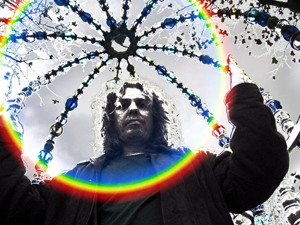
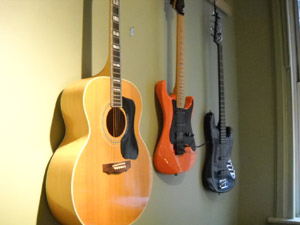

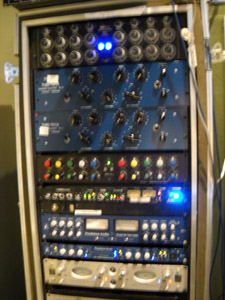
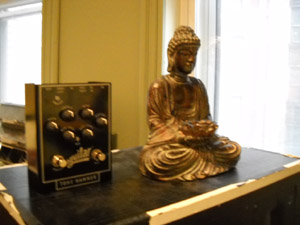
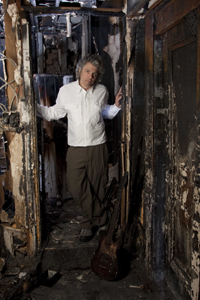
Justin
February 4, 2011 at 3:29 pm (14 years ago)Incredibly inspiring piece. Thanks Bob and Dave!
Jamey
February 4, 2011 at 3:50 pm (14 years ago)Bob, Thank you for sharing your wisdom.